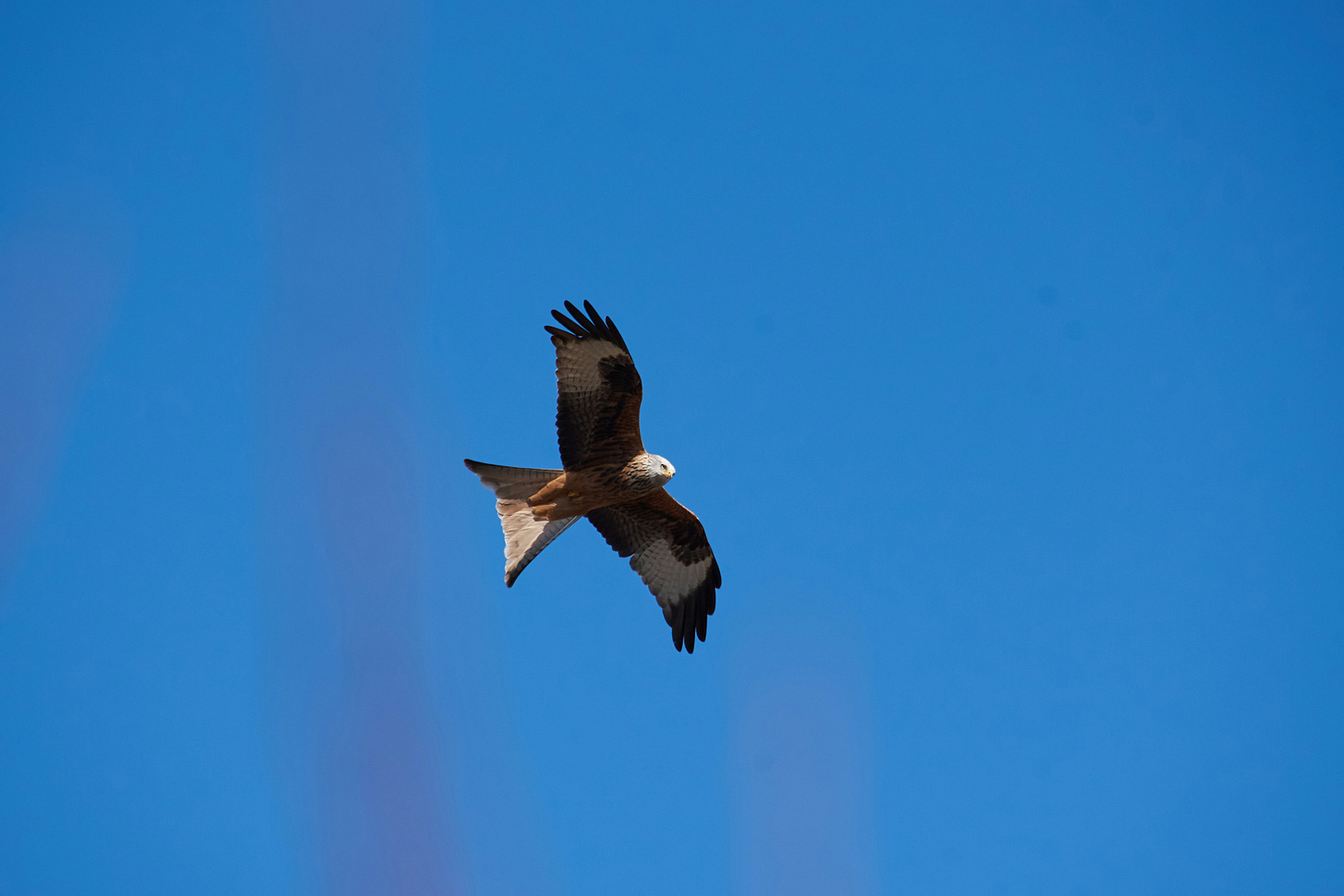
Thirty-five years ago this month, 14 red kites were released in the Chilterns Hills on the Oxfordshire/Buckinghamshire border.
On 10th and 19th July 1990, two Welsh birds and 11 Spanish birds were released by Ian Evans, the first project officer on the pioneering project to reintroduce red kites to the Chilterns Area of Outstanding Natural Beauty. Between 1991 and 1994, 56 more birds were released as part of the species reintroduction programme.
By 1996, at least 37 pairs had bred in southern England and in later years, the red kite’s reintroduction to the Chilterns was so successful that birds from the region were reintroduced to other parts of the UK, like Gateshead’s Derwent Valley. The birds are now thriving in many locations.
It’s in the Chilterns - or more specifically, over the M40 motorway which runs through the Chilterns - that I was first made aware of red kites (Milvus milvus). We’d drive up the M40 from London on the way to my grandparents’ house in the Midlands several times a year, and my mum would always point out the red kites. As I got older and started doing the journey on my own, I’d count the red kites as I went, always reporting to TG (my grandma) how many I saw on my arrival and stopping at Oxford Services on the way so I could see the magnificent birds up close. Why nobody else seemed to be paying attention to the huge birds of prey swooping over their heads was beyond me. I’m grateful my mum pointed the kites out to me, or maybe I wouldn’t be looking at them either.
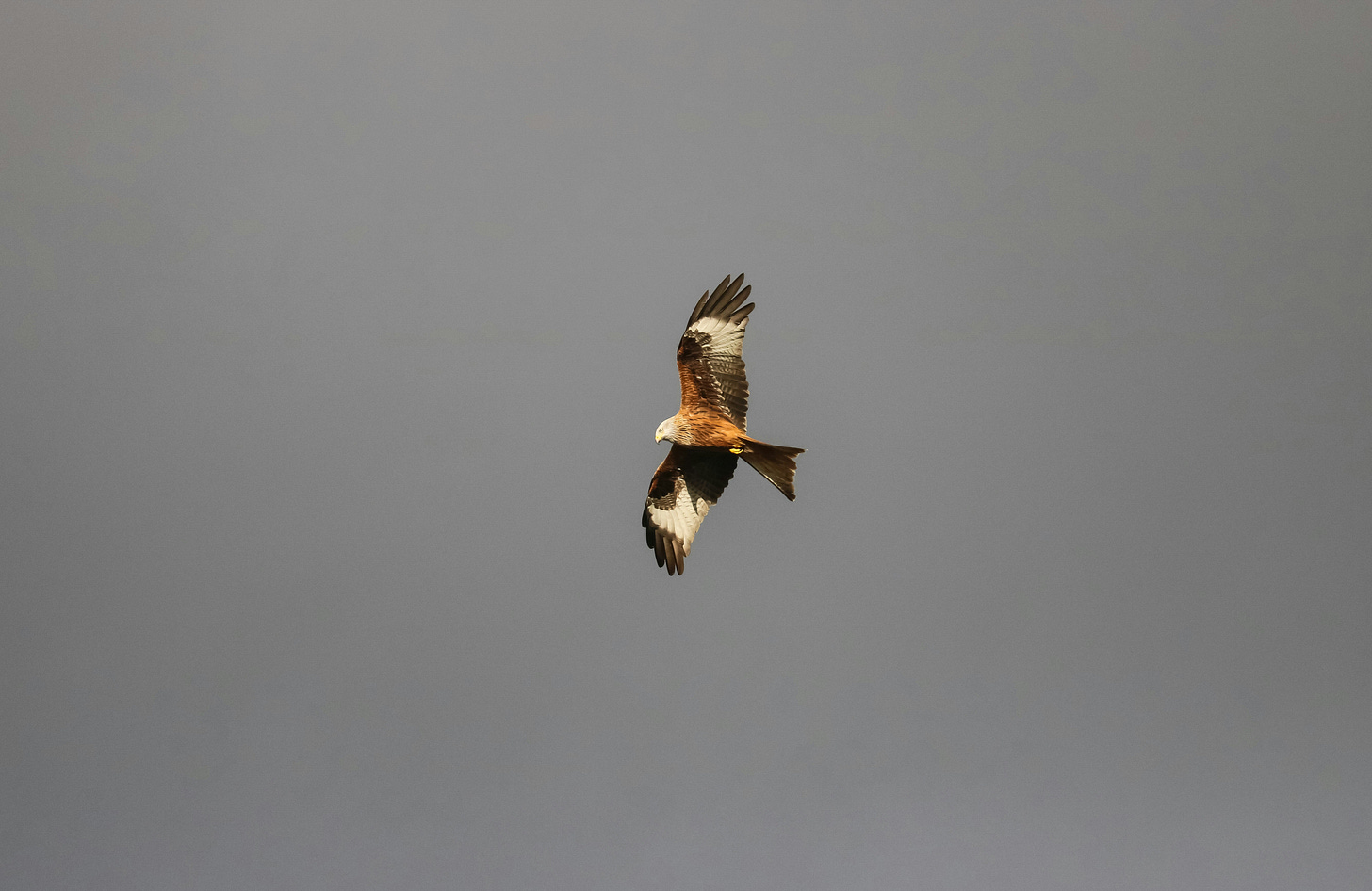
In 2017, my mum, who had since moved to Scotland, took me to the red kite feeding station at Bellymack Hill Farm in Lauriston, Dumfries & Galloway. Sat on the decking with a farm cat on my lap, I watched as a small woman walked out into the middle of a field, held some deceased creature in the air, then chucked a bunch of meat on a wooden platform. As if by magic, a swarm of gigantic copper-hued raptors swooped in from all angles, unknowingly putting on a show to an audience of delighted humans who’d paid a fiver for the pleasure.
I’ve seen many more red kites in Scotland since and continue to be wowed by them at various service stations on the rare occasion I drive up north.
During a break in the lockdowns, while scouting out new places to live, we visited Marlow in Buckinghamshire. Not only did we discover it was very much out of our price range and not what we were looking for, but the signs along the river warning people to “Beware of red kites stealing your food” gave me the impression local people prioritised their picnics over the wellbeing of their resident raptors (although in hindsight, red kites really shouldn’t be eating human food and the signs were probably well-meaning, just lacking context).
Despite the fact red kites almost tempted us to move to the Chilterns (as well as the proximity of the film studios my partner sometimes works at), we ended up in Kent, where I’d never seen a red kite.
That is, until this year. In May, on a dog walk at one of our favourite spots, I was stopped in my tracks by a familiar silhouette: the forked tail and huge wingspan of a red kite. A red kite in Kent!!! I couldn’t believe it.
About a week later, driving along the M25, I saw another red kite, soaring over Sevenoaks. This happened once more, though since I was behind the wheel of a large automobile I feel I should say there’s a small chance at least one of these sightings was a buzzard and it was wishful thinking on my part (see below for identifying features to help you tell the difference).
Then, at the end of May came the pièce de résistance. Back in my beloved South London, on a visit to Brockwell Park, I looked up and smiled. Soaring above my head was a red kite. In South London! I looked around, nobody else had clocked it. I guess their mums hadn’t introduced them the red kites over the M40.
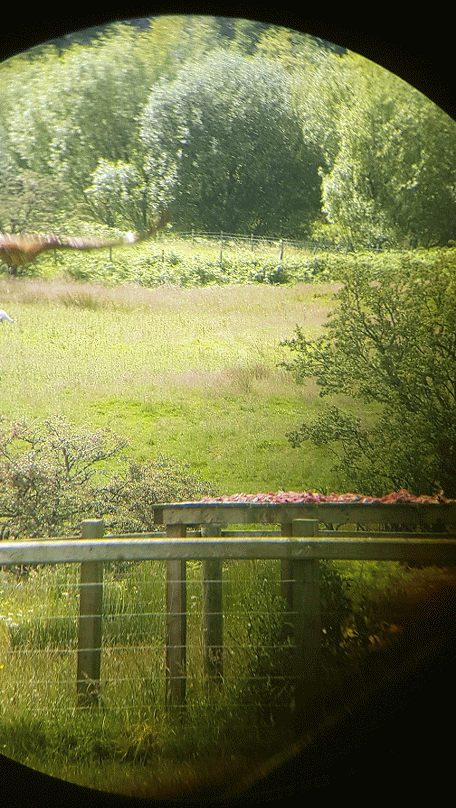
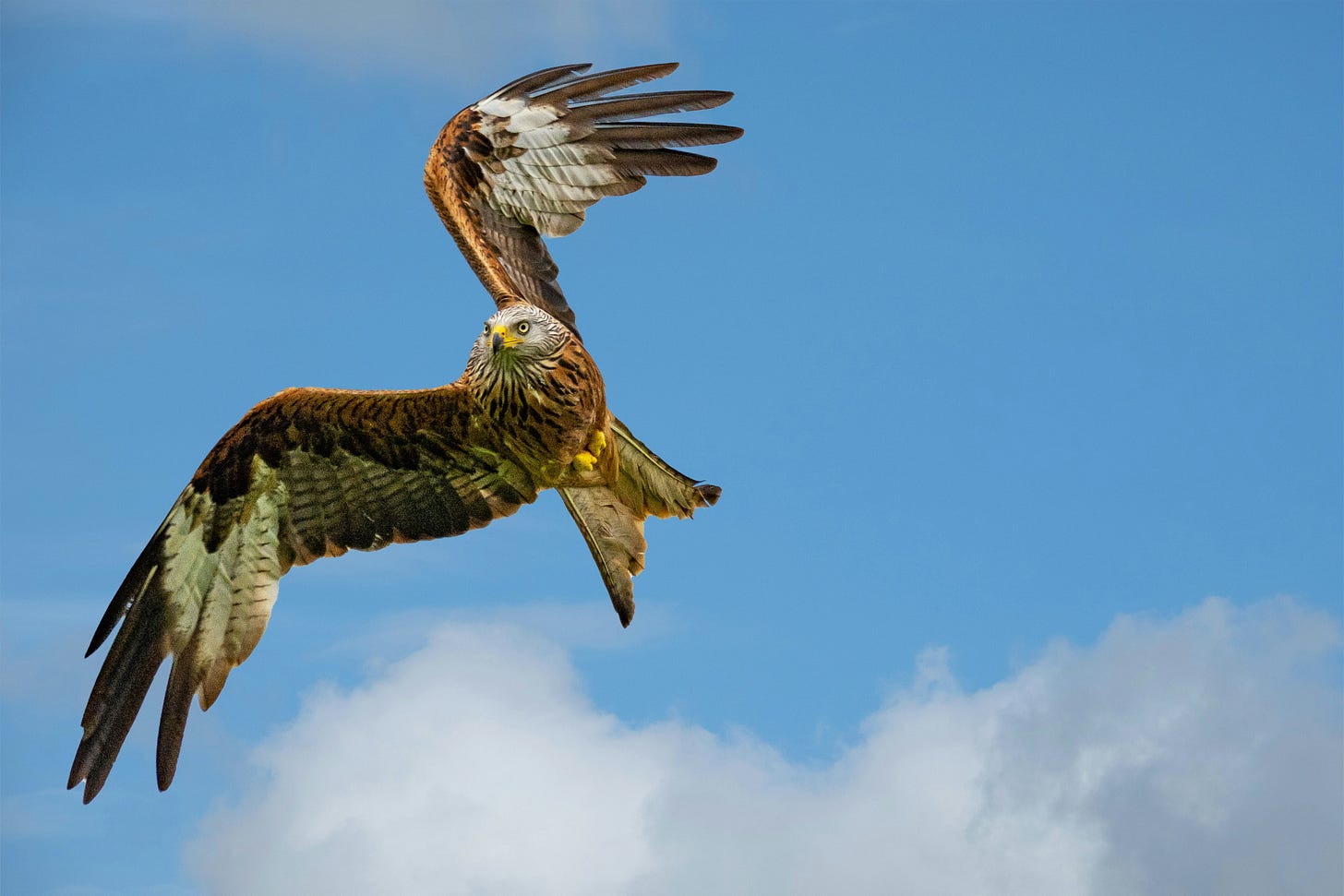
Red kite facts
The red kite’s Scientific name is Milvus milvus. ‘Milvus’ in Latin means ‘kite’.
Red kites have a wingspan of almost 2 metres and females can be up to 5 percent bigger than males.
Red kites are monogamous birds and mating pairs will return to the same nests each season.
In the Middle Ages red kites were widespread. In fact, they were protected by royal decree and killing them was a capital punishment because their scavenging habits were valued for keeping streets clean. However, by the 16th century, the birds were reclassified as vermin and persecuted by gamekeepers. Egg collectors also contributed to their decline and by 1871 they were extinct in England (and by 1879 in Scotland). By the time efforts were made to protect the birds in 1903, only a few pairs of red kites were left in remote parts of Wales. Now, thanks to successful reintroduction efforts, there are thought to be at least 4,400 breeding pairs of red kites in the UK (according to BTO and RSPB) and their conservation status is green.
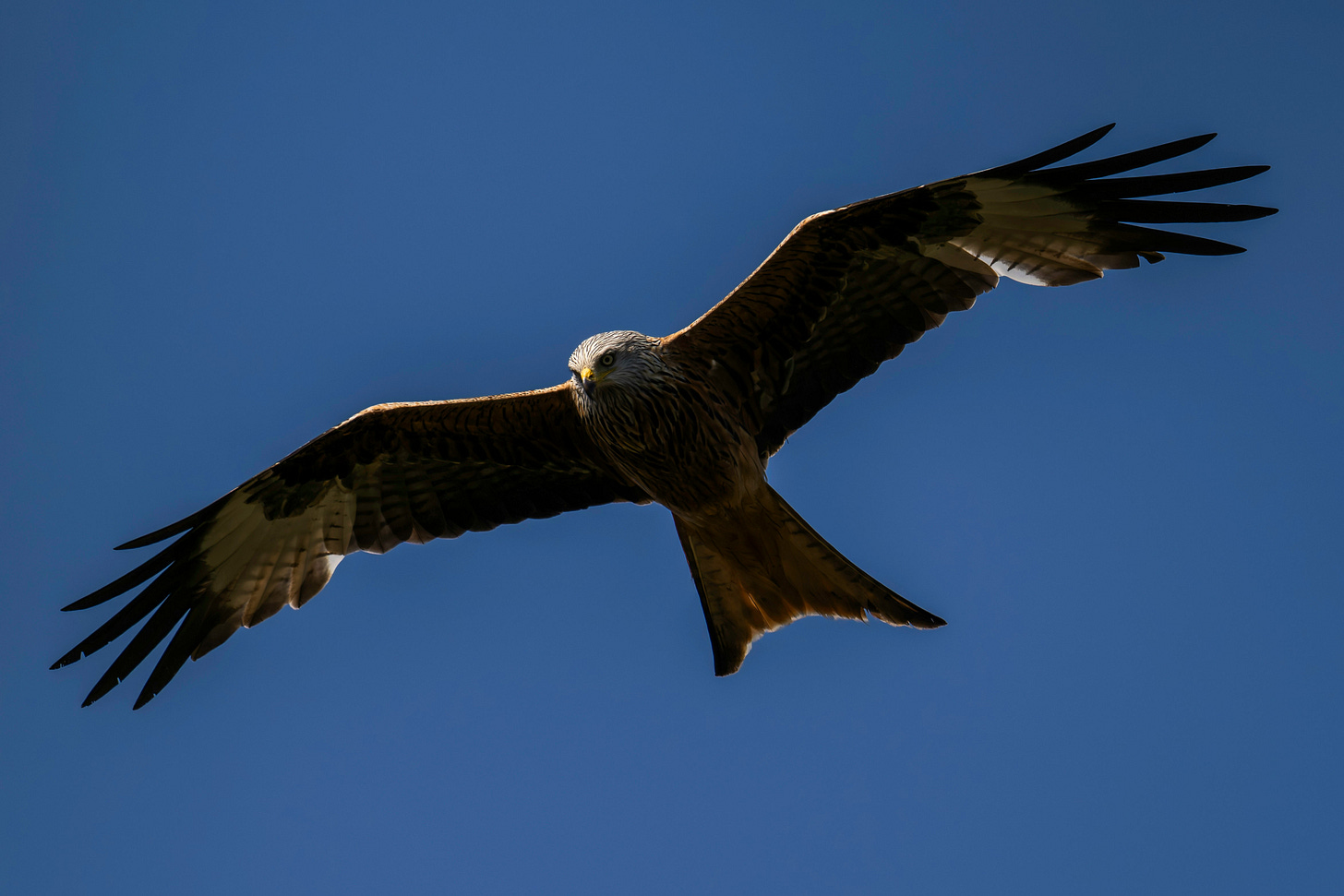
How to identify a red kite
If you don’t know what you’re looking for, you could easily mistake a common buzzard (Buteo buteo) for a red kite (or vice versa), so here are some key differences:
Look for their distinctive forked tail! When in flight, the red kite’s tail feathers fan out into a deep V, giving them a distinctive silhouette that sets them apart from a buzzard. A buzzard’s tail is a bit shorter and more wedge-shaped.
Just like the other kind of kite, they tend to soar more than buzzards, which flap their wings more often. Red kites tend to hold their wings flat, or slightly downcurved, whereas buzzards tend to hold their wings in a raised ‘V’ when soaring.
If you manage to get a closer look (perhaps you are better at remembering to take your binoculars out than I am!), you’ll see that adult red kites have a pale grey head. Buzzards have a brown head.
Red kites have a high-pitched scream. Buzzards have more of a cat-like squawk.
The white patches on the birds’ underwings are also a good identifying feature, if you can get a closer look. Take a look at some photos of both birds in flight to see what I mean!
Sources and further reading
Natural England: A Conservation Success Story
RSPB: Red kite profile
Woodland Trust: Red kite profile
BTO: Red kite profile
'I felt goosebumps when first red kites arrived': BBC story on red kites from the Chilterns being relocated to Gateshead
Discover Wildlife: Facts about red kites
When the Kite builds... Why and How we restored Red Kites across Britain by Dr Mike Pienkowski (book)
Red kites are still under persecution by some - support Hawk Conservancy and find out more about red kite reintroduction here
Nature Journal with me!
I’m running a nature journaling and zine-making walk and workshop in Mote Park, Maidstone on Saturday 19th July. Details and tickets here.
You might also like…
Why I'm no longer saying "It's just a buzzard"
While on holiday on the Isle of Arran last week, I caught myself saying “It’s just a buzzard” on more than one occasion. To be fair to myself, I was looking for golden eagles (with no success) or hen harriers (with some success), and I can see buzzards at home. But the more I thought about it, the more I reminded myself I should be showing the humble bu…





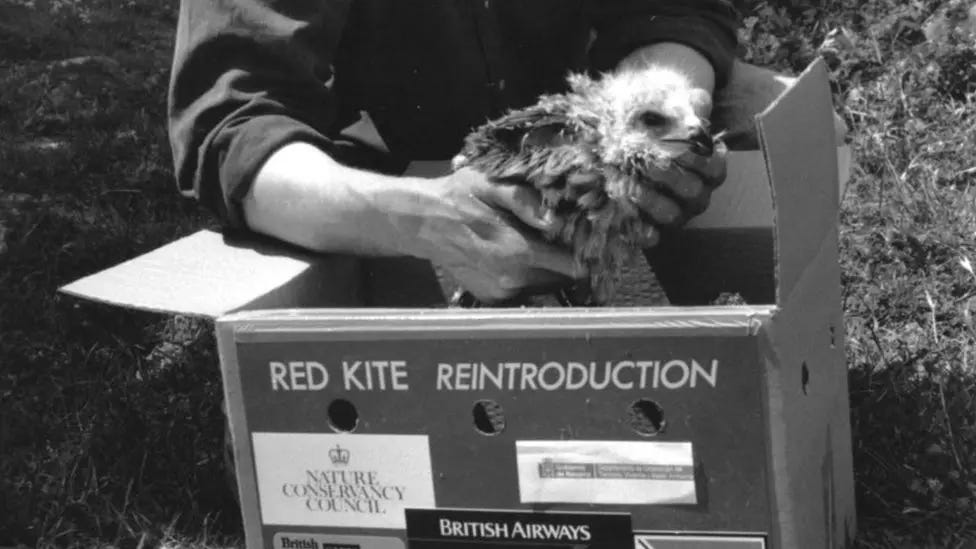

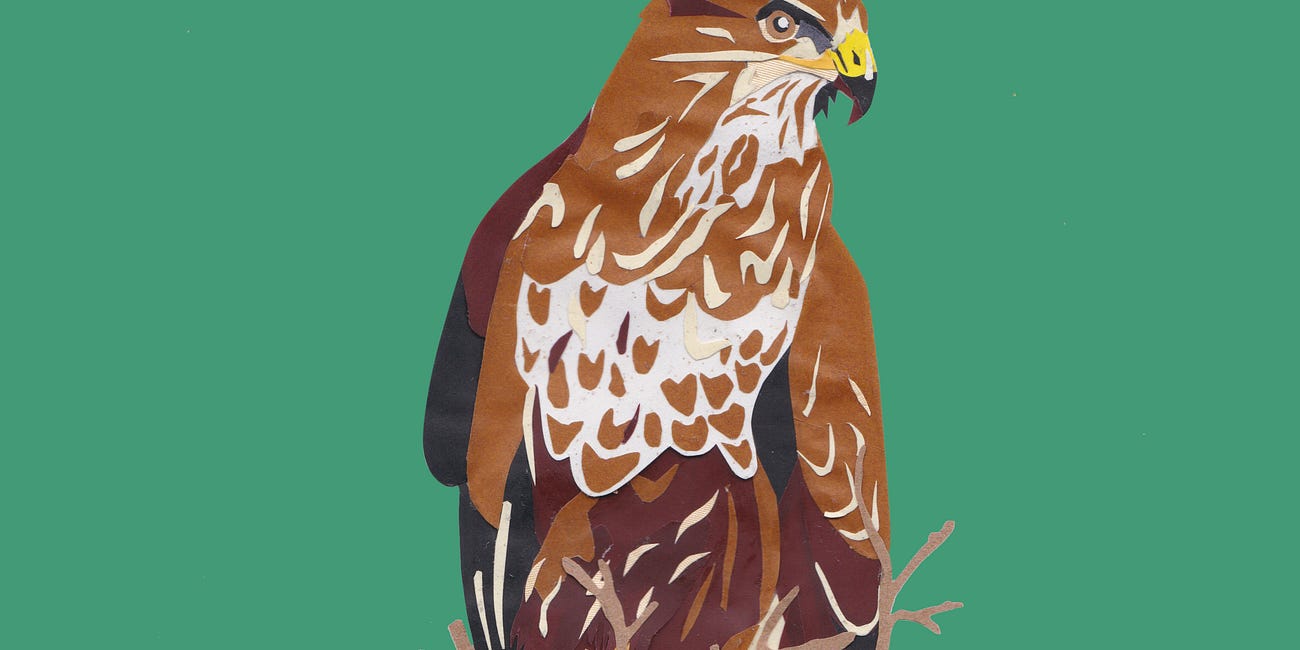
I saw a red kite in my part of Cornwall for the first time earlier this year. Used to think that when people said they’d seen them here that they’d probably seen a buzzard, but this was definitely a red kite. Apparently a few hundred, likely non-breeders, come to Cornwall for a summer holiday every year.
I live in a tiny village in mid-wales with a huge population of red kites (sometimes up to 50 show up!!)- mostly due to a retired butcher who feeds them everyday! https://www.bbc.co.uk/news/av/uk-wales-67938901
The locals have mixed feelings about it, and so does the RSPB I’m sure - but admittedly I find them so fascinating, and beautiful, and so glad they are back from extinction.